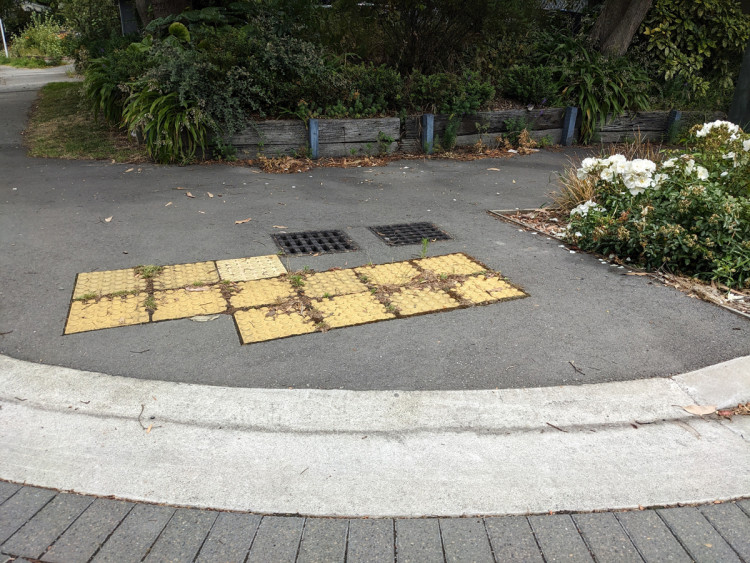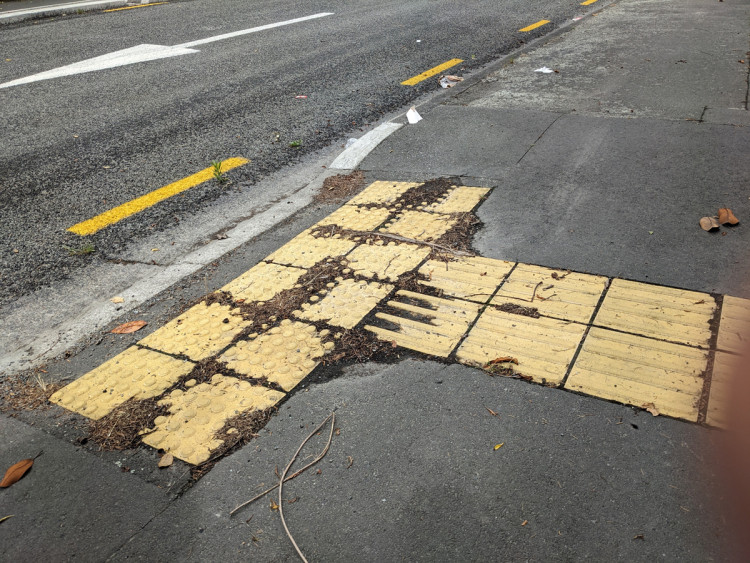Specific maintenance regimes should be adopted to monitor the condition of tactile ground surface indicators (TGSI) and to plan for replacement as part of maintenance programmes.
When developing a maintenance regime, consideration should be given to the following factors:
- Soiling of TGSI is inevitable especially in areas of high pedestrian activity and in medians. TGSI shall be cleaned free of surface debris to ensure that the visual contrast requirements are maintained. The photos below illustrate this need.
- The profile of the tactile surface is crucial to its effectiveness as a warning or directional aid for people who are blind or have low vision. TGSI should be replaced if the domes or bars drop in height below 4mm, because the effectiveness of the surface will be reduced and will ultimately become undetectable.
- Changes to the surrounding surface may require changes to the TGSI to ensure that the visual contrast requirements are maintained.
- TGSI shall be kept free of weeds and other vegetation likely to reduce the visual contrast or create a trip hazard (see the two images below).

Weeds growing around tactile paving (Photo: Christopher McLellan).

Debris gathering around tactile paving (Photo: Christopher McLellan).

